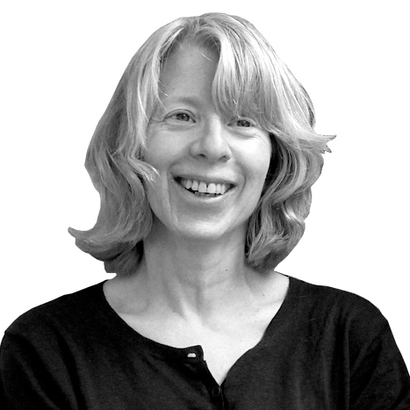Long before Barnes & Noble–superstore C.E.O. Leonard Riggio and Amazon founder Jeff Bezos reigned as the big bad wolves of the bookselling business, there was Marcella Burns Hahner.
During her 27-year tenure, from 1916 to 1943, as the visionary buyer and manager of the mammoth book section at Marshall Field & Company, the Chicago department store, Hahner was “the most conspicuous single figure in American publishing,” blurbing her favorite titles in national ads and, according to Random House co-founder Bennett Cerf, causing “mighty publishers in Manhattan to tremble when she stamped [her] little foot.”

In Hahner’s first year at the helm, the section grossed $235,000, more than 10 times what a typical bookstore brought in, writes Evan Friss in The Bookshop, his very well-researched history of the American bookstore business. Thanks to Hahner and her well-schooled staff, when customers came to Marshall Field & Company for one book, they left with half a dozen. When authors had trouble landing a contract with a publisher, they asked Hahner, nicknamed “the Czarina,” to step in. When she thought a book needed to be written, it got written.
Hahner is among the colorful figures who populate The Bookshop. There’s also the ineffable Ben Franklin, who, among other activities, was a pioneering bookseller in the colonies (and also an author, printer, and publisher), and Frank Shay, an early-20th-century bookstore owner and publisher who established a traveling bookshop. Fred Bass transformed his father’s small used-book store, the Strand, into a behemoth with the motto “18 miles of books.” Frances Steloff, the owner of the modern, lit-heavy Gotham Book Mart, thought writers were “the most wonderful people in the world” and made it her business to nurture them and see that their merchandise got moved. Some of those wonderful people—H. L. Mencken, Theodore Dreiser, Saul Bellow, J. D. Salinger, John Updike, and Samuel Beckett—were also customers. Gotham Book Mart, said Norman Mailer, was one of the last bookstores “where you can pick up literature, not commerce.”

Aided by interviews, diaries, letters, archival material, oral histories, and city records, Friss tells the story of an institution that has been deified, mythologized, and made the subject of novels such as Penelope Fitzgerald’s The Bookshop and Cathleen Schine’s The Love Letter, as well as movies like Funny Face, Crossing Delancey, Notting Hill, 84 Charing Cross Road, and You’ve Got Mail.
The bookstores of the early 19th century bear little resemblance to their 21st-century kin. In those days, browsing wasn’t a thing. Books sat in enclosed bins and boxes accessible only by clerks. The stock, limited to the strictly useful (legal, scientific, academic), tended to be organized by publisher rather than by subject. Some stores had no organizing principle at all.

Then again, the customer base was relatively small; few people read as a leisure-time activity. Most readers were in the Northeast. Unsurprisingly, that’s where the vendors were clustered. But by the start of the Civil War, most decent-size towns around the U.S. had at least one bookstore. Boston had 93, while New York had 229.
There are chapters devoted to sidewalk book vendors; right-wing bookstores whose inventory included guides to building nuclear-fallout shelters; left-wing bookstores; Communist, feminist, and gay bookstores, notably, the Oscar Wilde Memorial Bookshop, in Greenwich Village; and Black bookstores, like the not-for-profit Drum & Spear, which opened in Washington, D.C., in 1968.
Many gloomy statistics dot The Bookshop. In 1993, the U.S. Census Bureau reported 13,499 bookstores around the country, including indies, superstores, and specialty shops. By 2021, only 5,591 were left standing. Between 1995 and 2000, more than 40 percent of independent bookstores went out of business.
Today, the world’s biggest bookseller isn’t even a bookstore—it’s Amazon. As Friss points out, the two largest brick-and-mortar purveyors of hardcovers and paperbacks, Costco and Target, would not, by any stretch, be described as bookstores. Soon, Target will have the big-box book business to itself. According to a recent article in The New York Times, starting in 2025, Costco plans to sell books only during the holiday season, from September to December.
Friss’s frequently engaging book is marred by sloppy writing. “He had inked a deal,” he notes jarringly of a 19th-century bookseller. “Although she tries to avoid what people say about her on the internet.... she’s a media sensation,” he comments bafflingly of the novelist and bookstore owner Ann Patchett. The short profiles between chapters—of a U.P.S. driver who delivers inventory to a bookstore, a bookstore cat, and a buyer for a bookstore—are self-indulgent and utterly unrevealing.
Nonetheless, bibliophiles, bluestockings, and history buffs will want to dive in. Now, here’s a little moral quandary for them: This very minute, they can order The Bookshop on Amazon. Should they?
Joanne Kaufman is a New York–based journalist and critic


